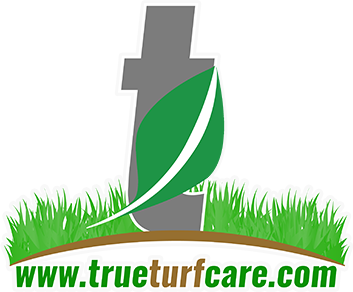Understanding Hardscaping and Its Importance for Your Property
- Jose Asencio
- Apr 29
- 4 min read
Hardscaping is often the unsung hero of landscape design. As property owners focus primarily on softscaping elements such as flowers and shrubs, they sometimes overlook the equally essential hardscape features that bring structure and functionality to outdoor spaces. Integrating hardscaping into your property not only enhances its beauty but also boosts its usability and overall value.
In this post, we will discuss what hardscaping is, the numerous advantages it offers, and why you should prioritize it for your property.
What is Hardscaping?
Hardscaping encompasses the non-plant elements of landscape design, including patios, walkways, retaining walls, fences, and other hard surfaces. These features are key in creating a cohesive and functional outdoor area that complements your home and its surroundings. For example, a beautifully designed patio can serve as the focal point of outdoor gatherings, while a well-planned walkway can guide guests safely through your yard.
Moreover, hardscaping is critical for managing water drainage, providing structural support, and improving navigation throughout your property. When combined effectively with softscaping, hardscaping transforms an ordinary yard into an inviting outdoor living space.
Benefits of Hardscaping
1. Enhanced Aesthetics
One of the first things you will notice about hardscaping is how it elevates your property's appearance. According to a recent survey, 72% of homeowners agree that a well-designed patio or walkway significantly enhances overall curb appeal. Materials like natural stone, brick, and concrete can be used in countless patterns and designs, making it easy to create visually striking elements that draw the eye.
2. Practical Benefits
Hardscaping provides practical benefits that enhance your property's usability. For instance, designated walkways not only offer safe paths to navigate your yard but also help define spaces for various outdoor activities. Patios can serve as a staging area for family reunions or barbecue parties, while retaining walls stabilize soil and prevent erosion. A well-constructed retaining wall can support a sloped yard while allowing for beautiful flower beds above it.
3. Low Maintenance
When compared to softscaping, hardscaping requires minimal upkeep. Plants demand regular watering, pruning, and pest control, while hardscape features are generally more resistant to the elements and pests. Homeowners can save on long-term maintenance costs, allowing them to enjoy their outdoor spaces without the hassle of constant upkeep. In fact, incorporating hardscaping can reduce overall landscape maintenance by up to 40%.
4. Increased Property Value
Investing in hardscaping can have a significant impact on your property's market value. Features like outdoor kitchens, fire pits, and meticulously paved driveways often appeal to potential buyers. A National Association of Realtors report indicates that a well-designed patio can return up to 80% of its construction costs when the home is sold. Well-maintained hardscaped areas can indeed make your property a hot commodity in the real estate market.
5. Environmental Benefits
Hardscaping can play a surprising role in promoting environmental sustainability. Permeable materials allow water to drain effectively, reducing runoff and the risk of flooding, especially in urban areas. This is a critical factor, as studies show that impermeable surfaces contribute to 30% of urban flooding. By utilizing permeable hardscaping designs, you can help manage stormwater and lessen your environmental footprint.
6. Design Flexibility
The beauty of hardscaping lies in its design versatility. You can create tailored spaces that reflect your personal style, whether you prefer sleek and minimalist lines or intricate, patterned designs. This freedom in design allows you to express creativity while enhancing your outdoor living experience.
Popular Hardscaping Elements
Patios and Decks
Patios and decks are among the top choices for hardscaping materials. They provide flexible outdoor spaces suited for various activities, from family barbecues to evening gatherings under the stars. Elevated decks offer stunning views, while ground-level patios make the transition from indoor to outdoor living seamless.
Walkways and Paths
Walkways serve dual purposes: enhancing visual appeal and improving accessibility. Made from materials like natural stone, brick, or gravel, they help direct traffic through your yard and create beautiful transitions between different sections of landscaping.
Retaining Walls
For properties with varying elevations, retaining walls are indispensable. They create flat areas suitable for planting and other features while effectively preventing soil erosion. A well-constructed retaining wall can elevate your landscaping options significantly.
Fencing and Borders
Fencing not only provides security and privacy but also defines your property's boundaries. Available in various styles and materials, fences can enhance your overall hardscape aesthetic while offering protection.
Fire Pits and Outdoor Kitchens
Outdoor kitchens and fire pits can turn your backyard into a desirable entertainment space. These elements enhance the atmosphere and extend your living area, making it an ideal spot for gatherings and relaxation with family and friends.
Elevate Your Outdoor Space
Incorporating hardscaping into your landscape design can profoundly enhance the look, feel, and functionality of your property. From visual appeal to practical advantages like reduced maintenance and increased property value, the benefits of hardscaping are clear.
Whether you seek a comprehensive renovation or minor enhancements in specific areas, integrating hardscaping features will create an inviting outdoor space. This investment can yield lasting benefits for years, transforming your outside area into a beautiful and functional haven for you and your loved ones.


